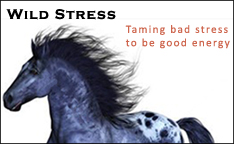Relaxation Trainer
Personal coaching to get you over stress humps
Managing stress without a plan and techniques is rough – How we can help
Managing stress without a plan, a portfolio of techniques, and a lot of support is very tough. Some forward movement can be made but really great results come from working with a stress management professional.

How Personal Relaxation/Stress Management Training Works:
It’s simple. An initial 45 minute phone appointment would identify what’s going, what sort of help might be a good match for you, how to do the initial relaxation techniques, and when we should talk again. Following the phone call, precise instructions on what you need to do, how to do it, and when to do it would be sent to you via e-mail.
A week or two later, a 30-45 minute check-in/check-up call will take place. In that session, we determine your next steps. Simple.
How Long Does Training Take?
It depends on how much support you want and how much you really want to get a feel for coaching over the course of working on a project or projects. If you have had a lot experience with coaching or just want a quick surgical support period, then a month or two might do it. If you really want to get to know yourself as a Creative, to sharpen your approach to your creative work, stretch yourself to take on projects you have never faced before, and work broadly to share your creations with the world, think about working with a coach for 3, 6, or 12 months. If you want to work longer, that’s great, no one will be kicked out the door. You are in control of the coaching experience in terms of length of time and your goals.
Safe and Confidential
The coaching experience provides you a safe place to stretch your wings, freely express your ambitions, think big/be big, and explore thinking in new ways. It is also a great place to look directly at the old standards obstacles that crush achievement—fear of failure, anxiety, frustration, and the inner critic. Coaching is a confidential place. I follow the ethics of the world’s largest coaching association, the International Coach Federation which means our entire time together will be treated as confidential.
O.k., How Do I Get Started? Read More
Get On The Fly
The biggest thing that stops people from trying relaxation techniques is: “Hey, I don’t have 30 minutes to meditate.” So let’s break that down: the only way to relax is through meditation, most people assume. But that assumption is false.
On-the-fly relaxation techniques are numerous, and in most ways, more effective than one or two meditation sessions per day. These regular world techniques are totally portable, invisible to others, and simple to work in.
Deep Breathing – Four or five cycles of breathing in, down to the belly and out really takes the edge off.
Sensory Mindfulness – Tune gently away from your thoughts and feelings and listen to the sounds around you for a few seconds. Next touch any surface in front of you (e.g. a keyboard, your sleeve, a coffee mug, a pen) and just note the feeling on your finger tips. Repeat for 30 seconds or up to a few minutes. Hey, don’t tell anyone, but you have just preformed a meditation practice.
Calming Imagery – Bring to your mind’s eye your last vacation (if it was a good time), or a favorite pet, or anything else that strikes you as calming (you also can do this with your eyes open). Hold onto the image or make it more vivid for a minute or two. Feel the greater calm.
No cross-legged position required for any of these. No seclusion necessary. Invisible to everyone else but you know what really is going on. You are de-stressing, when you need it, within your regular life, all on the fly.
The Big 4 Stress Types
There are a few other sources of stress but here are the biggies:
Threat – “Am I going to lose my job.” “God, I think he wants a divorce.” “What am I going to do?”
Anything that pokes at something near and dear to us (consciously or unconsciously) and shows the possibility of losing that precious thing, is a threat. Threat is not just a gun in the ribs, it can be the loss of anything we value.
Thwart – “Get moving!” “I hate post office lines; look at that dope slowing everything down.” “I told you a hundred times, do it this way!” “They will never listen to me so I’m just going to keep my mouth shut.”
We know what needs to be done and damn it! the world is not playing along. What idiots. I demand that things be done my way. What? You don’t always get your own way (in traffic, in lines, at work, in life)? Hello, stress.
Inner Conflict – “I know I need to get started on that project but…” “This just isn’t right but I have no choice but to do it anyway.” “Which way do I go, this way or that? They both feel the right way.”
Here we are split between two compelling options (or more). Both have their possibilities but we just can’t get off the dime and therefore we live with the stress of being inactive/divided.
Change – “I just: moved, lost my job, retired, won the lottery, got sick, ran off with a starlet, bought a house, had a baby, got a promotion.”
Shocking but true, good events and bad events stress us by causing our mind, body, and soul to swing into action to figure out what all this new stuff is and how to live with it. Win the lottery? Then you are stressed. Break your leg and your nose? Then you are stressed. Can’t win when things change.
Homework: See if your top three stressors fit into these categories. Note: Some stressors are so good at stressing, you can have two, three, or four of the major types of stresses cooking away in your life at one time because of one problem. You get a promotion (change), you want the money that comes with the promotion but not the work (inner conflict), you are afraid that some of your co-workers will turn their competitive attention upon you (threat), and you feel that you can’t really make the changes you want and therefore will feel like a puppet (thwart). Ouch!



